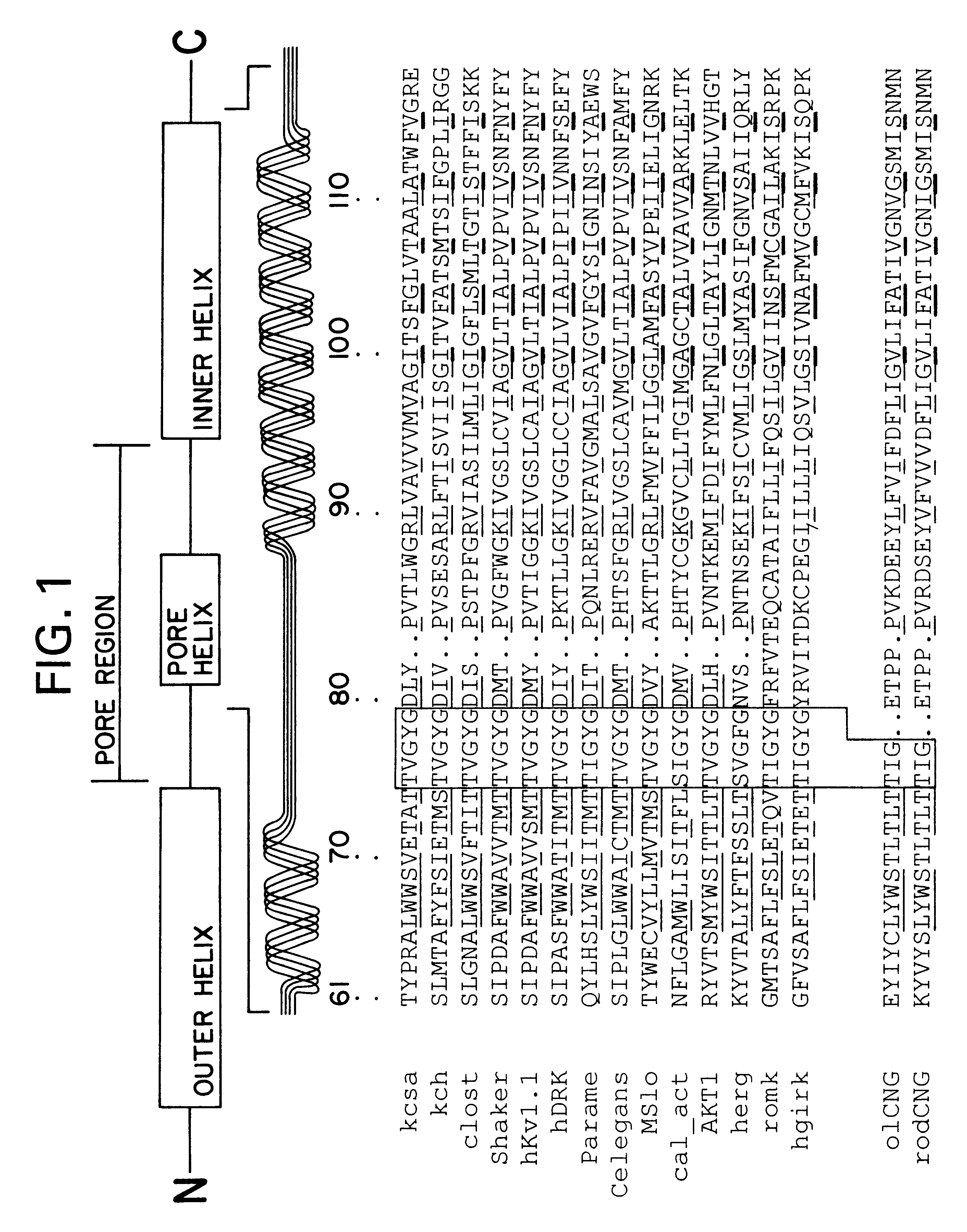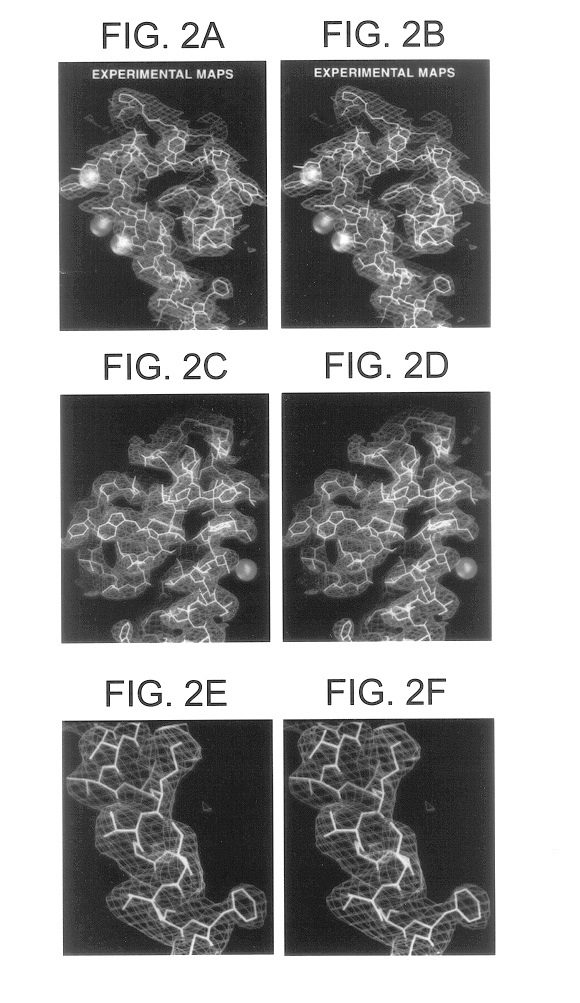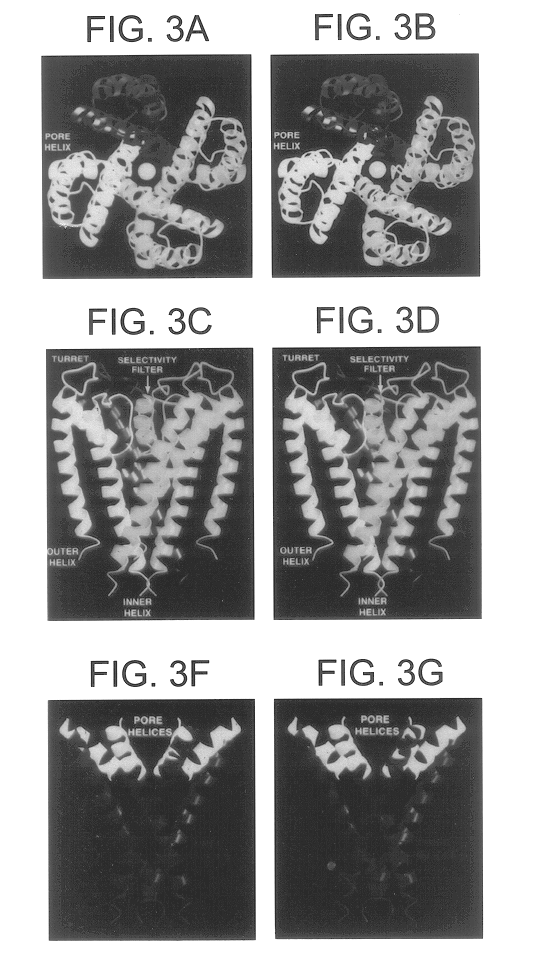Assays for screening compounds which interact with cation channel proteins, mutant prokaryotic cation channel proteins, and uses thereof
a technology of cation channel protein and compound, which is applied in the field of screening compounds which interact with cation channel proteins, mutant prokaryotic cation channel proteins, and uses thereof, can solve the problems of difficult to isolate and purify potassium channel proteins, few drugs or therapeutic agents that act on potassium channel proteins to treat abnormal processes, and low detection efficiency
- Summary
- Abstract
- Description
- Claims
- Application Information
AI Technical Summary
Benefits of technology
Problems solved by technology
Method used
Image
Examples
example i
Potassium Channel Structure: Molecular Basis of K.sup.+ Conduction and Selectivity
The K.sup.+ channel from Streptomyces lividans is an integral protein with sequence similarity to all known K.sup.+ channels, particularly in the pore region. X-ray analysis with data to 3.2 (reveals that four identical subunits create an inverted tepee, or cone, cradling the selectivity filter of the pore in its outer end. The narrow selectivity filter is only 12 .ANG. long, while the remainder of the pore is wider and lined with hydrophobic amino acids. A large, water-filled cavity and helix dipoles are positioned so as to overcome electrostatic destabilization of an ion in the pore at the center of the bilayer. Main-chain carbonyl oxygen atoms from the K.sup.+ channel signature sequence line the selectivity filter, which is held open by structural constraints to coordinate K.sup.+ ions but not smaller Na.sup.+ ions. The selectivity filter contains two K.sup.+ ions about 7.5 .ANG. apart. This configu...
example ii
Structural Conservation in Prokaryotic and Eukaryotic K.sup.+ Channels Revealed by Scorpion Toxins
Scorpion toxins inhibit ion conduction through K.sup.+ channels by occluding the pore at their extracellular opening. A single toxin protein binds very specifically to a single K.sup.+ channel to cause inhibition. The toxins are 35 to 40 amino acids in length and have a characteristic fold that is held rigidly by three disulfide bridges (1). They are active site inhibitors, because when they bind to the channel they interact energetically with K.sup.+ ions in the pore (2-4). The intimate interaction between these inhibitors and the pore of K.sup.+ channels has been exploited to gain insights into the structure and function of K.sup.+ channels.
Studies employing site-directed mutagenesis of the Shaker K.sup.+ channel have mapped the scorpion toxin binding site to regions corresponding to the extracellular entryway of the kcsa K.sup.+ channel (4-9). Although the K.sup.+ channel selectivity...
PUM
| Property | Measurement | Unit |
|---|---|---|
| radii | aaaaa | aaaaa |
| radii | aaaaa | aaaaa |
| volume | aaaaa | aaaaa |
Abstract
Description
Claims
Application Information
 Login to View More
Login to View More - R&D
- Intellectual Property
- Life Sciences
- Materials
- Tech Scout
- Unparalleled Data Quality
- Higher Quality Content
- 60% Fewer Hallucinations
Browse by: Latest US Patents, China's latest patents, Technical Efficacy Thesaurus, Application Domain, Technology Topic, Popular Technical Reports.
© 2025 PatSnap. All rights reserved.Legal|Privacy policy|Modern Slavery Act Transparency Statement|Sitemap|About US| Contact US: help@patsnap.com



